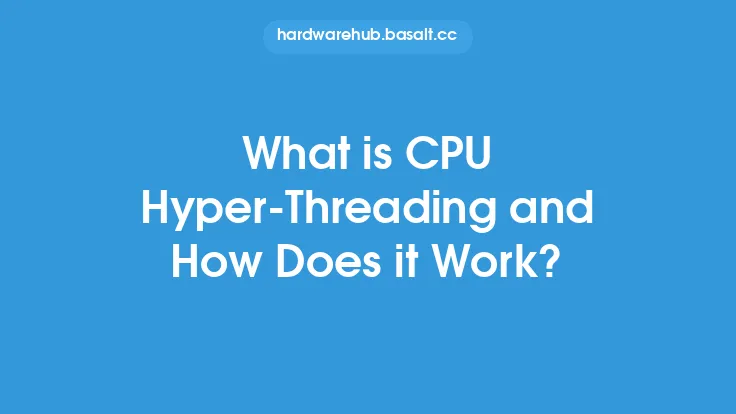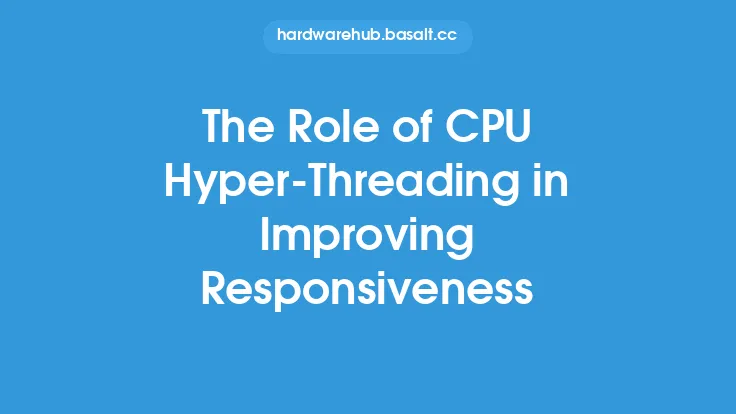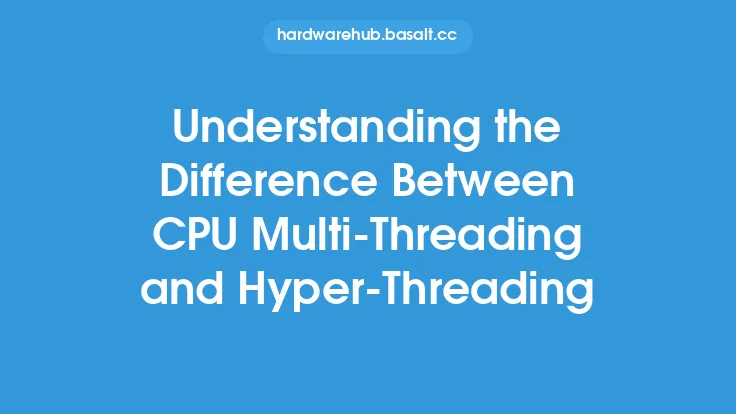When it comes to investing in a new CPU, one of the key features to consider is hyper-threading. Hyper-threading is a technology that allows a single physical core to handle multiple threads of execution, effectively doubling the number of cores available to the operating system. But is hyper-threading worth the investment? To answer this question, we need to delve into the details of how hyper-threading works and its benefits.
Introduction to Hyper-Threading
Hyper-threading, also known as simultaneous multithreading (SMT), is a technique used by CPU manufacturers to improve the performance of their processors. It works by allowing a single physical core to handle multiple threads of execution, each with its own program counter, registers, and stack. This is achieved through the use of a shared execution engine, which is responsible for executing instructions from multiple threads. The key benefit of hyper-threading is that it allows a single core to handle multiple tasks simultaneously, improving overall system performance and responsiveness.
Benefits of Hyper-Threading
So, what are the benefits of hyper-threading? The main advantage is that it allows a single core to handle multiple threads of execution, which can improve system performance and responsiveness. This is particularly useful in applications that are heavily multithreaded, such as video editing, 3D modeling, and scientific simulations. Hyper-threading can also improve system responsiveness by allowing the operating system to handle multiple tasks simultaneously, reducing the time it takes to switch between applications. Additionally, hyper-threading can help to improve system utilization, by allowing a single core to handle multiple threads of execution, reducing the likelihood of idle cores.
Technical Details of Hyper-Threading
From a technical perspective, hyper-threading works by duplicating the architectural state of a physical core, allowing multiple threads to share the same execution engine. This includes the program counter, registers, and stack. Each thread has its own architectural state, which is stored in a separate set of registers, allowing the CPU to quickly switch between threads. The CPU also includes a number of shared resources, such as the execution engine, cache, and memory controllers, which are shared between threads. The key challenge in implementing hyper-threading is ensuring that the CPU can efficiently switch between threads, minimizing the overhead of context switching.
Hyper-Threading in Modern CPUs
In modern CPUs, hyper-threading is often implemented in conjunction with other technologies, such as multi-core processors and turbo boosting. Multi-core processors allow multiple physical cores to be integrated onto a single die, improving overall system performance and power efficiency. Turbo boosting, on the other hand, allows the CPU to temporarily increase its clock speed, improving performance in applications that are sensitive to clock speed. The combination of hyper-threading, multi-core processors, and turbo boosting can significantly improve system performance and responsiveness, making it an attractive option for applications that require high levels of processing power.
Investment Considerations
So, is hyper-threading worth the investment? The answer depends on your specific needs and requirements. If you are running applications that are heavily multithreaded, such as video editing or 3D modeling, then hyper-threading can be a valuable feature. Additionally, if you are running a server or data center, hyper-threading can help to improve system utilization and reduce the number of physical cores required. However, if you are running applications that are single-threaded, such as gaming or scientific simulations, then hyper-threading may not provide a significant benefit. In this case, the investment in hyper-threading may not be justified, and you may be better off investing in a CPU with a higher clock speed or more physical cores.
Conclusion
In conclusion, hyper-threading is a valuable feature that can improve system performance and responsiveness in applications that are heavily multithreaded. While it may not be worth the investment for applications that are single-threaded, it can be a valuable feature for applications that require high levels of processing power. When considering an investment in hyper-threading, it is essential to evaluate your specific needs and requirements, taking into account the type of applications you will be running and the level of processing power required. By understanding the benefits and limitations of hyper-threading, you can make an informed decision about whether it is worth the investment for your specific use case.





